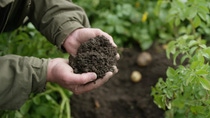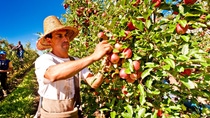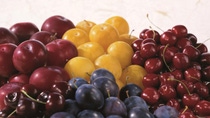Agriculture
Environmental Safety
Glufosinate-ammonium has been thoroughly tested for environmental safety. Research concludes that the herbicide is safe to use when instructions are followed. It is not significantly active in soil and is rapidly degraded by micro-organisms, making the risk of water contamination very unlikely. Several product stewardship initiatives instruct farmers on how to minimize potential impact on the environment through good agricultural practices.

A balanced approach
As a non-selective herbicide, Glufosinate-ammonium effectively controls a wide variety of weeds without tillage. Reduced tillage is essential for the fertility of the soil as it preserves essential nutrients. It also reduces manpower, tractor use and ground disturbance which makes it more resource-efficient in terms of energy consumption due to reduced use of machinery, giving it a low carbon footprint.
As Glufosinate-ammonium rapidly degrades in soil, contamination of groundwater is very unlikely. Other preventive measures such as appropriate rinsing of the application equipment, away from springs, wells or watercourses, further ensure that no residues reach groundwater. Farmers are also advised how best to apply products with Glufosinate-ammonium. They take into account variable conditions at their farm – such as the amount of rainfall and soil type – and are made aware of specific best practices for the application of this herbicide.
As an example, growers are advised to apply this herbicide when the wind is blowing at speeds lower than 4 meters per second. In addition, the use of specialized equipment reduces drift during spraying.
Biodiversity is preserved if farmers use a balanced approach to pest management. Correct application and the implementation of best agricultural practices help farmers preserve useful insects, pollinators, birds and the biodiversity on their land. When used according to label instructions, Glufosinate-ammonium does not pose any unacceptable risk to the environment or non-target plants.
Safety for mammals
Numerous studies on Glufosinate-ammonium have found that adverse effects in animals in real-life conditions are extremely unlikely. In orchards, for example, farmers apply Glufosinate-ammonium to the ground vegetation beneath the trees in a band treatment, and not over the entire field. After treatment, mammals instinctively shy away from treated areas as weeds start wilting.
Studies that look at dietary toxicity under field conditions show significantly lower risk to mammals in comparison to studies based on unrealistic laboratory conditions and dose.

Did you know?
- Conservation (or reduced) tillage enhances the organic matter content in the superficial layer of the soil1 and can reduce soil erosion by up to 90% compared to intensive tillage.2
- By 2050, the proportion of the population facing stressed water supplies is expected to increase by 500% and the number facing full water scarcity is expected to increase by 800%.3
- Reducing soil erosion by conservation tillage is essential to make the earth less likely to dry out.
Related topics
1Madejóna, E., Morenoa, F., Murilloa, J.M., Pelegrínb, F. (2007). Soil biochemical response to long-term conservation tillage under semi-arid Mediterranean conditions. Soil and Tillage Research 94: 2. pp. 346–352.
2Conservation Technology Information Center (CTIC). Top 10 Conservation Tillage Benefits.
3Farming First. Water






